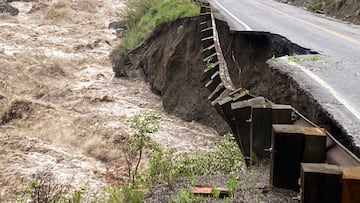How will the federal government shutdown affect national parks?
No agreement has been made to avert a government shutdown and parks will be forced to close without funding.

Lawmakers exceeded the time limit to approve or extend funding across 12 appropriations bills to keep the whole of government operations working, meaning a government shutdown will happen on Monday. Government agencies will need to cut operations and hundreds of thousands of government employees going without pay while many others will be furloughed.
That would include staff and services at the national parks. The question is whether America’s natural jewels and monuments will remain open or have to close. Either way, local economies around the parks that rely on visitors will most likely be impacted as well.
Would national parks close if the government goes into shutdown?
While the potential repercussions of a shutdown are myriad, it will mean that federally-maintained sites like national parks would be forced to close in the coming days.
National parks are not required by any rule or law to close but the Antideficiency Act “prohibits federal agencies from obligating or expending federal funds in advance or in excess of an appropriation, and from accepting voluntary services.”
We remain hopeful that Congress will act to fund the government. Access and visitor services would be available on Sunday, Oct. 1. Beginning Monday, Oct. 2, all national parks would close, and visitors should expect services to be unavailable.
— National Park Service (@NatlParkService) September 29, 2023
Read more at:…
That means that staffing levels would have to be reduced to only essential personnel and services from vendors would be cut. Past shutdowns could give an idea of what might happen this time around.
Keeping national parks open can result in damage to the nation’s heritage
The 16-day government shutdown of 2013 saw Jon Jarvis, then-NPS Director, take the decision to close the parks in order to prevent damage to them. The move immediately became front-page news and he was brought before Congress to justify his decision. However, everyone, from President Obama, down came under criticism.
The incident played a major role in a senior member of the Trump administration authoring a “contingency plan” prior to the 2018-2019 government shutdown which ended up keeping the national parks open, but at a cost. During that 35-day shutdown, the longest ever, the parks did stay open but with only a skeleton crew and services like maintenance and garbage collection were halted.
Related stories
This resulted in numerous problems from trash piling up to damage of sites and theft of artifacts as the number of visitors was surging at the time. Later, the Government Accountability Office (GAO) ruled the action illegal, but that opinion wasn’t legally binding. The White House had used funds from previously collected, but as yet unspent entrance fees to keep the limited park operations running.
It’s not clear what the Biden Administration will do when the shutdown begins. Jarvis told Outside Magazine that he thinks that the White House would be making the right decision if they closed the national parks. While not a cure-all for the damage that could occur, it would help prevent much of what has been seen, some of it long-term or even permanent, resulting during past shutdowns.


